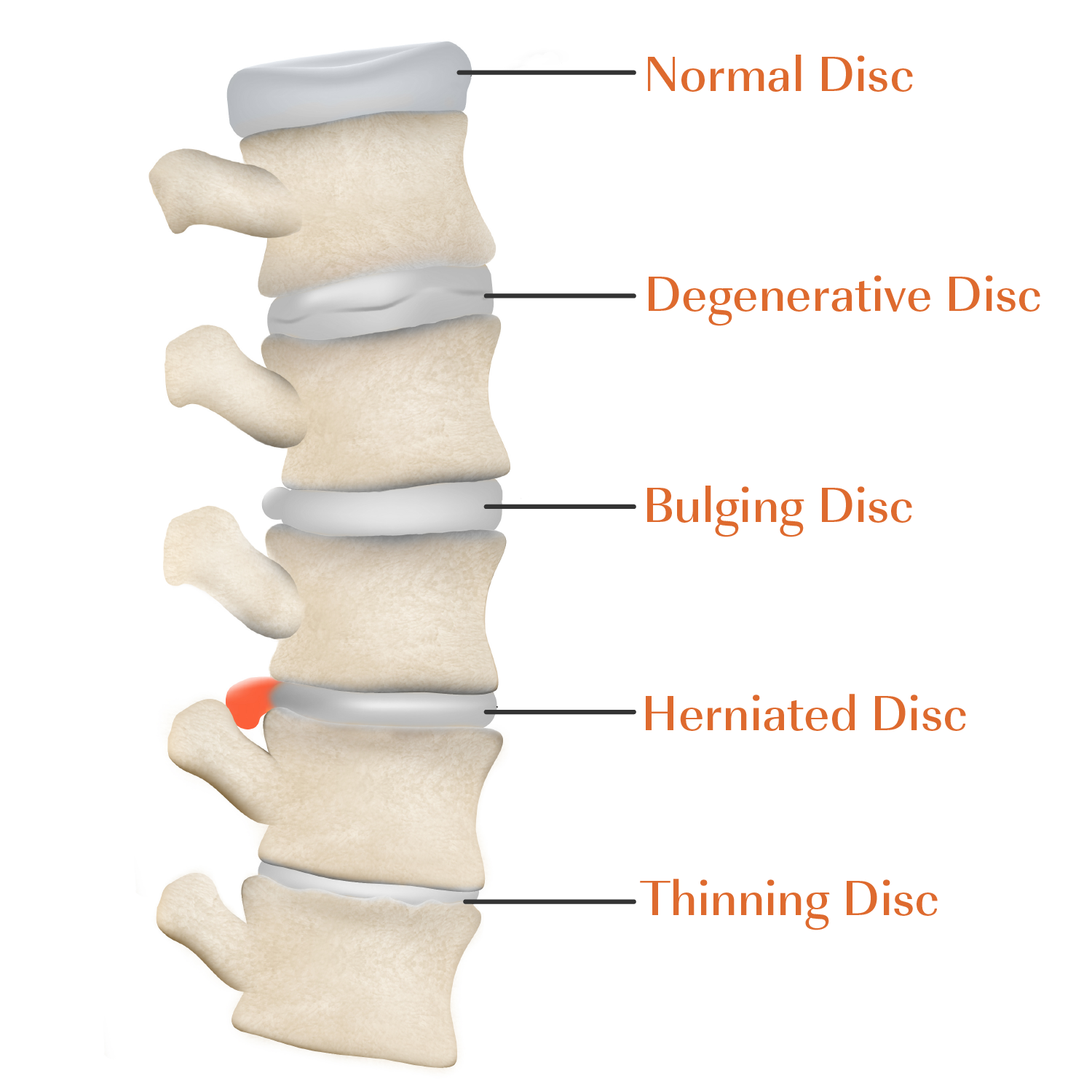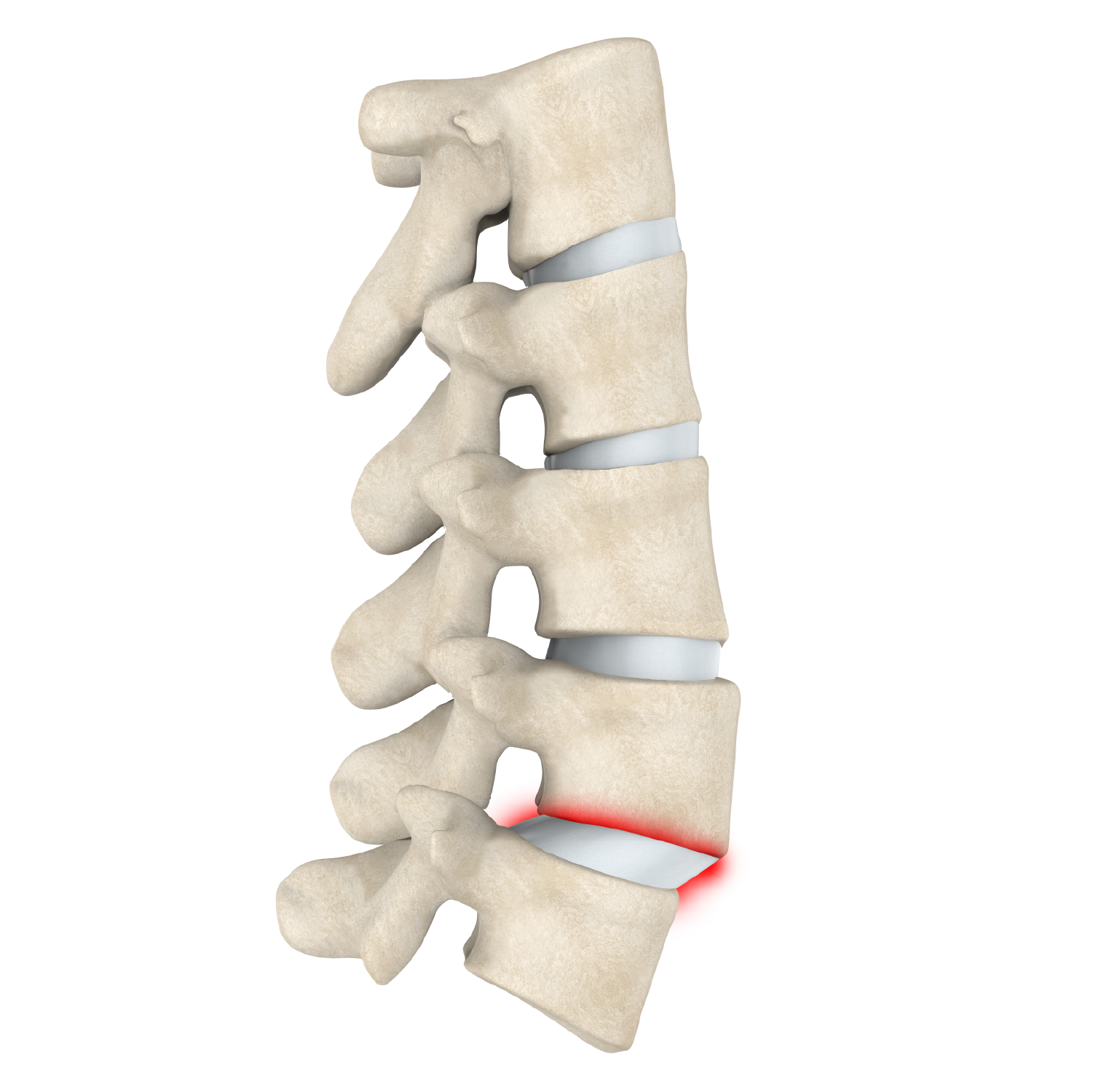Learn The Basics
Spinal Anatomy and Common Conditions
Spinal Anatomy
Cervical: C1-C7
Thoracic T1-T12
Lumbar L1-L5
Sacroiliac Joint S1-S5
Coccyx
Common Conditions
Degenerative Disc Disease
During the natural aging process, the discs between each vertebral body can lose their flexibility, height, and elasticity which can cause a tear in the tough outer layer of the disc, causing the disc to herniate, bulge, or leak the gelatinous core. The bulges or leakages can end up compressing the nerve roots and/or spinal cord, causing symptoms including, but not limited to lower back and/or leg pain.
Spondylolisthesis
Spondylolisthesis is a condition in which one of the vertebrae slips forward or backward. Progression of this condition can result in severe nerve compression and spinal deformity. The condition can be a result of degenerative disease, bone fracture, or a birth defect.
Spinal Stenosis
Spinal stenosis is a term used to describe narrowing of the channels in which nerve roots and the spinal cord are located. This narrowing is caused by age-related degenerative changes which place undue pressure on the nerves. Painful symptoms are a result of nerve compression and tend to be worse with standing or walking.
Other spine conditions like curvature (scoliosis) or birth-related diseases do occur, but are less-common than age-related changes or traumatic injuries to the spine.




